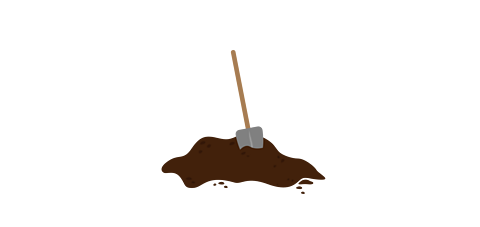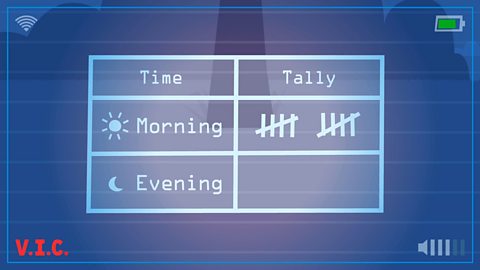Being scientific

Types of tests
Depending on what you want to investigate, you will need a different test. For example, imagine you want to change the speed of your car.
If you want to see how the material of the tires affects the cars speed, this would need a comparative test. Things like materials are qualitative data.
If you want to change the weight of the car to see how this affects its speed, this would need fair test. You would change the amount of weight and record the changing speed. Anything that is measured in number, like weight or height, is quantitative data.
Watch: Comparative test
Comparing the melting times of ice cream.
Child: Ice cream!
What makes ice cream melt??
Narrator: This is a good opportunity for a test, Molly…
Don’t forget to make it fair. Everything needs to be the same, so we need the same type of ice cream, the same quantity and you both need to hold it for the same amount of time!
Now we just need one thing different so we can compare what difference it makes.
Good thinking, if it’s hotter, does ice cream melt faster?
This test compared the ice cream in two environments. They observed that one ice cream melted more quickly than the other so it was a comparative test. This is a little bit different to a fair test.
Fair tests

When scientists do tests or experiments, they always only change one thing and record another. All other things are kept the same. This is a fair testAn experiment in which only one thing (variable) is changed and another is recorded. All other things are kept the same..
If more than one thing changes in a test or experiment, this is not a fair test. We cannot know for certain what caused the changes.
You could carry out a fair test to see how heat affects the time it takes for ice cream to melt. Keep everything about the ice cream exactly the same (amount, type of ice cream, surface area) and only change the temperature. Record the time each takes to melt and this would be a fair test.

Mint and cola investigation
Watch: Carrying out the experiment with the Science Museum Group
Watch this clip from where they carry out this experiment.
See the experiment in action with help from The Science Museum team.
Watch: Understanding variables
Find out about variables in this science clip.
Activity 1: Quiz
Activity 2: Making an investigation fair

An investigation always starts with a question.
Write a fair test to answer this question: Do all plants grow better in soil?
Think about:
- What do you need to keep the same?
- What will you measure or observe?

Activity 3: How high do balls bounce?
Ask a responsible adult to help you with this activity.
You will need a ruler and several different types of ball, such as a tennis ball, a football and a golf ball.
- Find a place where you can stand and drop a ball onto the same surface.
- Ask the adult to use the ruler to measure how high the balls bounce.
How will you make sure this is a fair test?
All the balls must be dropped from the same height.
What other scientific investigations could you complete using the same balls?
More on Working scientifically
Find out more by working through a topic
- count5 of 11

- count7 of 11

- count8 of 11
